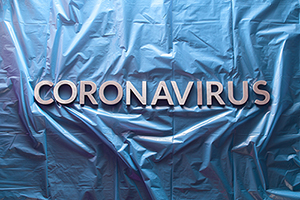At this point, it’s safe to assume that you’ve heard of the new strain of coronavirus originating in China and the global panic it has caused. But how worried should you actually be? This week, I’m taking a look at what we know at this point: The Good, the Bad, and the Uncertain.
Let’s get the worst news out of the way first:
THE BAD: In an about-face, on January 30, 2020, the International Health Regulations Emergency Committee of the World Health Organization dubbed the Wuhan coronavirus outbreak a PHEIC (public health emergency of international concern). A PHEIC is declared if an event poses a public health threat to other nations through the spread of disease and potentially requires a coordinated international response.
Rapidity of spread: Coronavirus morphed from a few hundred cases with a handful of deaths to many thousands of cases with over 200 documented deaths. The lack of adequate test kits and reluctance of people with relatively mild infections to come forward and risk being separated from their families suggests the numbers may be vastly UNDERESTIMATED. Some health experts estimate as many as 200,000 people are affected in China—that’s more than in the severe SARS outbreak of 2003.
It has spread to over 20 countries in every continent. It started at an inopportune time, when tens of millions of Chinese residents were on the move for the biggest holiday of the year—the Lunar New Year.
And last week the first case of person-to-person spread was recorded in the U.S. Several people are quarantined under observation awaiting confirmatory tests.
Travel to and from China is virtually at a standstill—and the stock market was down 600 pts last Friday in reaction to the disruption of business travel and tourism and interruption of supply chains. Western countries are evacuating their officials and personnel in big airlifts. The State Department issued its highest advisory against travel to China.
Entire regions of China are on lockdown. No school, no public events. One of the largest quarantines in history is trapping tens of millions of people in place near ground zero of the pandemic.
Here’s a post I spotted on Facebook:
“I work for a private school in China as an online teacher. Children are not permitted out of their homes and will be on an extended winter break. In other words, the government has no idea when children can go back to school. We are accepting more students into our online courses because parents want them to continue with their studies. It’s their only outlet to the world. This virus is bringing down China’s economy, educational and health system.”
The virus also appears to be very transmissible. German researchers estimated that for every person coming down with it, an additional 3.5 are exposed. And they also note the virus is communicable even from people who seem ostensibly well—with latency perhaps as long as 10 days to 2 weeks before symptoms appear.
So all those screening efforts with thermography, etc. won’t prevent carriers from coming into contact with vulnerable individuals.
You may be seeing more people wearing masks in public since news of the virus broke, but masks offer scant protection. They don’t really occlude the mouth, they do nothing for the eyes, and viral particles may remain viable on surfaces for many hours and even days. Disinfectants like Purell won’t get rid of them—they’re fine for bacteria, but may not do anything against encapsulated viruses like coronavirus.
And there’s currently NO treatment for coronavirus other than supportive care and isolation.
Phew! That’s a lot of bad to cover. No wonder people are so concerned about this virus! But it’s not all bad news:
THE GOOD: There are no deaths yet reported outside of China. Cases outside of China are being traced and contained. And although it’s spreading rapidly, it appears to be less deadly than SARS or MERS, the latter of which had as much as a 30% mortality rate. The death rate seems to be in the single digits, and mostly affects the very young, the elderly, and those with pre-existing conditions. This is unlike the 1918 Spanish Flu which disproportionately affected young, seemingly healthy people, harnessing their robust immune systems to deliver a knockout blow.
Additionally, international virologists have given this the utmost priority: they’ve already ramped up the development of several promising vaccines, and are investigating currently-available antiviral medications to see if they’re active against this coronavirus. But that may take months to test.
Keep in mind that, as scary as the numbers are, they’re nothing compared to the toll of the ordinary flu. There are 16,000 flu-related deaths just in the US alone every year! 140,000 have been hospitalized for flu-related complications this winter alone. And antibiotic resistant bugs routinely kill tens of thousands of Americans annually.
And while the new coronavirus is extremely contagious, it’s not nearly as contagious as the measles: For measles it’s 1–>12 vs. 1–>3 or 4 for the current outbreak.
And finally, infectious epidemics tend to burn themselves out. Even the deadly bubonic plague and smallpox outbreaks receded eventually. (Admittedly only after decimating large portions of the world’s population—but medicine has come a long way since then!)
Hopefully you’re feeling a bit less panicked now. But with a virus so new, there’s much we don’t know, so it’s still best to keep an eye on the news and take precautions:
THE UNCERTAIN: The virus could change and become more virulent and deadly. Scientists have concluded, after exhaustive analysis of the structure of the virus, that a single mutation could render it far more deadly.
Will it elude containment efforts in the US or other countries? Time will tell. We have no idea where we’ll be next week, much less next month, things are moving so fast.
It’s already cold and flu season—will every person with a cough or a fever think they have coronavirus? That could be a mess.
We don’t know—and can’t claim—that plausible things like D, C, selenium, and zinc, or herbs like garlic, Astragalus, Andrographis or elderberry would work against coronavirus.
In fact, Facebook announced its plans to block posts about Coronavirus “fake cures”.
Drink bleach? I don’t think so! The FDA recently issued a warning about “Miracle Mineral Solution”: “Drinking any of these chlorine dioxide products can cause nausea, vomiting, diarrhea, and symptoms of severe dehydration. Some product labels claim that vomiting and diarrhea are common after ingesting the product. They even maintain that such reactions are evidence that the product is working. That claim is false.”
Nor is there is any evidence that extreme measures like drinking active ozone water will “kill the virus.”
Will existing drugs work? One of the first U.S. cases was treated with a Gilead antiviral under an experimental protocol and he seemed to improve, but it’s too early to tell.
Conspiracy theories abound: Is it a “man-made virus”? An Indian paper (not yet peer-reviewed) concludes “Taken together, our findings suggest unconventional evolution of 2019-nCoV that warrants further investigation.” They seem to be suggesting the virus was synthesized in a bioweapons lab or vaccine research facility near Wuhan and then accidentally released.
This led conspiracy theorists on social media to proclaim, “This was a virus developed for vaccines which was accidentally released from the BSL-4 lab in Wuhan,” and “This is flat out a man-made bioweapon.” Unsubstantiated speculation is more viral than the actual pathogen itself.
I’m skeptical. Nature doesn’t need any help from humans to wreak havoc on us, as it seems to have done handily since the dawn of recorded history.
I hope this article has helped to separate some of the hysteria from the facts, and that you’re feeling better-informed and less nervous. We’ll keep you apprised as we know more; be sure you’re following me on Facebook and Twitter for the latest. In the meantime, continue using proper cold-and-flu season hygiene—frequent hand washing, covering when you cough or sneeze, and avoiding touching your eyes, nose, mouth, etc., are ways we can all help to mitigate the spread of airborne viruses.







